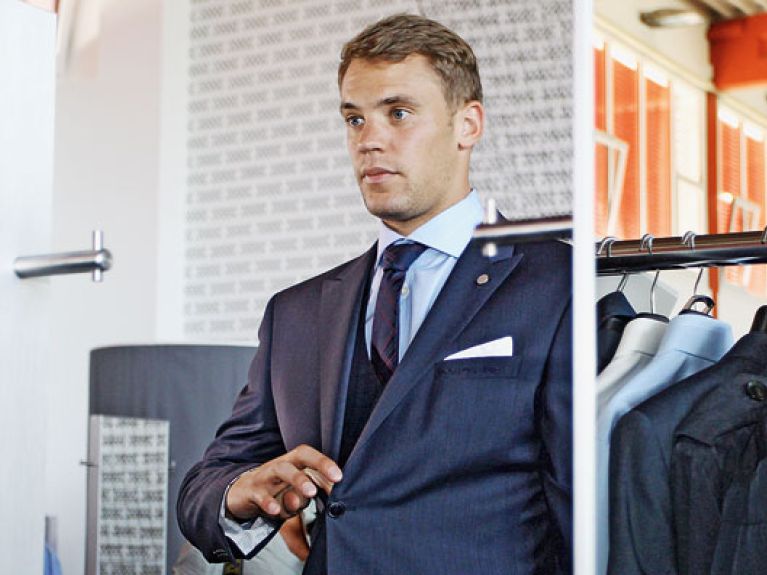Football with finesse
From fashion gaffes to a sense of style: football has also changed in matters of fashion.

Minor mishaps, faux pas and blunders are all just part and parcel of what makes it so entertaining to watch footballers. And this is no less true of their fashion sense. Searching back through our memories, we find a cornucopia of embarrassing gaffes, the like of which normally only come to light when flipping through photo albums of our own youth. For example the light-blue polyester flares worn by Germany’s national squad at the 1974 World Cup. Or the white cotton socks they would wear in flip-flops, pulled up over the knees of their tracksuit bottoms on their days off. Not to mention the shirts worn by Hamburger SV players during their first UEFA Cup Winners’ Cup victory in 1977, with pointed collars that flopped down almost to their nipples. And the cringe-worthy images continue with all those dreadful haircuts – from the mullets of the 1980s to the scrubbing brush that Christian Ziege had running down the middle of his scalp at the 2002 World Cup. But hairdressers as the aiders and abettors of players’ dodgy fashion sense now face tough competition from aspiring tattoo artists.
All the same, football has definitely smartened up its appearance in the 21st century, the era in which it has become a global entertainment and social phenomenon. This is thanks not least to the fact that top fashion houses have long been a firm fixture among the sponsors of major football clubs and national squads. As a result, players look pretty good when they appear in public. “In the past, we Germans would have said: ‘What’s the point? You’re athletes, not pop stars,’” comments goalkeeper Manuel Neuer, talking about the cool image that used to be the exclusive domain of Italian players in their elegant suits. “These days the difference no longer seems so great.” Today’s pros could pass as models – they not only have the powerful thighs that they have always had, but also boast toned upper bodies and move in a lithe, fluid manner. All the same, such slim-fit Italian tailoring also comes with certain snags, at least when attempting to make the sort of energetic movements that expressive star coaches do when gesturing to their teams on pitch. Only last season, Pep Guardiola and Zinédine Zidane both split their trousers in the technical area.
The days of the alpha male in football are long gone – the kind of players who sought to underscore their primacy in the team with ostentatious status symbols and gestures. A new younger generation exhibits a blend of self-confidence and understatement that nicely complements their modish look. And even someone as flamboyant as Dortmund’s Pierre-Emerick Aubameyang, who was once seen in his free time sporting a feathered outfit that made him look more like Big Bird from Sesame Street than a footballer, combines this with a touch of self-mockery that used to be rarely encountered in football. Professional footballers can afford whatever fashion they choose – in terms of both their physiques and their wallets. And while it used to be important in this profession to avoid any suspicion of unmanliness, footballers these days are happy to admit that they are more interested in fashion than in cars. Like David Alaba, for instance, who once spent his first earnings as a pro “on designer gear”, or Jérôme Boateng from Bayern Munich, who boasts a collection of over 600 pairs of trainers.
This shift in consciousness can be attributed to one particular footballer who acted like a pop star and whose haircuts were as cool as his free kicks. “David Beckham demonstrated that professional footballers and style are not necessarily mutually exclusive,” remarks Thomas Hitzlsperger, who experienced the Brit’s golden years as a young pro in the Premier League and played in Germany’s national squad when his country came second in Euro 2008. “I never dressed like he did, but style suddenly became important in football, and for me too.” That said, Beckham was likewise not immune to the fashion gaffes that some footballers still make. When he appeared at an event in a skirt – a Japanese couturier’s version of a Scottish kilt – the Times used this to illustrate a feature on “why footballers have such terrible dress sense”. ▪

